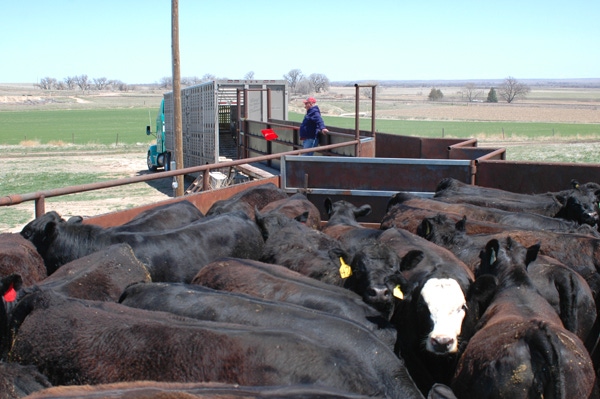Changing industry, changing markets
Understanding cattle market history offers context to the current quandary surrounding cash fed cattle price discovery. Part 3 of a multi- part series. Read part 2 here...
May 24, 2016

“Volume will not return to cash markets,” says Stephen Koontz, agricultural economist at Colorado State University, in the executive summary to the multi-year Price Discovery Research Project (PDRP). “There are strong incentives for individuals to market fed cattle through methods other than negotiated cash trade.”
Yet, fed cattle prices discovered in the cash market are central to many alternative marketing arrangements (AMAs). Those same cash prices also serve as a reference point for everything from calf prices to futures prices (see Part 2 of this series, “Fed cattle cash price matters”, in the May issue).
As the volume of cash transactions dwindles for fed cattle, a growing number of producers wonder whether or not it matters, and if it does, to what?
Along with understanding why AMAs now dominate (see Part 1, “When cash was king”, in the April issue), it helps to keep the evolution of fed cattle marketing and public price reporting in mind.
Government price reporting
“It was the Agricultural Marketing Act of 1946 that provided regular reporting of livestock prices, quantities and transaction characteristics from reports voluntarily supplied by market participants in its Market News program,” explain Janet Perry and others in the 2005 report, Did the Mandatory Requirement Aid the Market?, from USDA’s Economic Research Service (ERS).
Before that time and since, the federal government enacted laws aimed at both protecting producers and facilitating price discovery and market efficiency, including the U.S. beef grading system.
“The Packers’ Consent Decree [1920] and the Packers and Stockyards Act [1921] were intended to protect livestock sellers from market power and other abuses,” explains Kenneth H. Mathews Jr. and co-authors in the ERS report Mandatory Price Reporting, Market Efficiency and Price Discovery in Livestock Markets.
At the time, terminal stockyards dominated the market, and they were located close to beef packers.
Then came the improved U.S. highway system and refrigerated trucks that supplanted the railroads for transporting cattle and beef. That helped spawn modern-day cattle feeding following World War II.
Along with it came increased use of smaller auctions closer to cattle production, which eventually put the terminal markets out of business. Subsequently, the move to trading fed cattle direct shelved most smaller fed cattle auctions.
“This decline in auction markets posed challenges for price reporting, and AMS [USDA Agricultural Marketing Service] developed its voluntary price reporting system in the 1970s and 1980s to reflect these new realities,” Mathews and his co-authors explain.
“Under voluntary reporting, both the buyer and seller had to agree to share the price and volume of a specific transaction. If AMS had enough transactions for a commodity, it would then publish the low, high and weighted average price and the volume of sales.
“However, there were concerns that the voluntary reports could be inaccurate if based on only some prices rather than all prices. Meatpackers also use the reported prices in their formula pricing, so they could potentially report only lower prices, which would lower the reported average and the prices they paid for their formula-priced livestock,” according to the Mathews report.
These concerns reached fever pitch by the mid-1990s, as domestic consumer beef demand had lost an average of 1% each year for the previous two decades.
The meatpacking industry concentrated in response to waning beef demand, and cattle feeders consolidated. Lots of folks were questioning the effectiveness of voluntary reporting.
The culmination was the Livestock Mandatory Reporting Act (LMRA) signed into law in 1999 and implemented in 2001.
The report published by Mathews and his peers last year investigates the economic implications of livestock mandatory reporting (LMR) in the context of declining participation in cash markets in favor of AMAs for price discovery market efficiency and price behavior before and after passage of the LMRA.
“The LMRA introduced mandatory price reporting of most livestock transactions to improve the flow of transaction information in the marketplace and enhance price discovery, and to replace the previous system,” say Mathews and his co-authors.
Among other things, LMRA requires packers that harvest more than 125,000 head per year to report prices twice daily of fed steers and heifers purchased, and boxed beef sold. The Mandatory Price Reporting Act of 2015 — reauthorizing LMRA for five years — was signed into law last September.
Ironically, there was no scientific basis to support such a law. As Koontz and Clem Ward of Oklahoma State University explain in a 2011 literature review, “It is difficult to find any research prior to the legislation that demonstrated inadequacies in the voluntary price reporting system that had been in existence.”
The switch from voluntary to mandatory reporting yielded benefits, costs and unintended consequences, Ward and Koontz conclude.
“There is increased transparency and accuracy, but there is evidence that these problems were small under the voluntary system, with the exception of beef grid price premiums and discounts,” Ward and Koontz explain. “There has been a loss of information about regional markets.”
However, they say the evidence is that because of LMR, regional market integration has improved. “There has been new information on non-cash terms of trade — forward contracts and marketing agreements. But the value of this new information is not clear … It may be appropriate to make the case that what was hoped for from the legislation was not correct and that the successes of the legislation were not its original intent.”

BEEF Seedstock 100 List
Looking for a new seedstock provider? Use our UPDATED Seedstock 100 listing to find the largest bull sellers in the U.S. Browse the list here.
Some proponents of LMR hoped that mandatory reporting would reveal the price discrimination some suspected between cattle sold in the cash market and those sold through AMAs.
“In an analysis focusing only on the cash markets for cattle, beef, and beef byproducts, this study found no significant differences in the behavior of prices in these markets between the pre-LMR and LMR periods,” according to the Mathews report.
Likewise, Perry and her fellow researchers found: “The close alignment in price levels suggests that formula marketing agreements held a small price advantage in the time since LMR implementation, but that the advantage has not been consistent and that negotiated cash prices have frequently been higher.”
Keep in mind, USDA budget constraints leading to the suspension and cancellation of a growing number of AMA reports in recent years is another subject unrelated to LMR, specifically.
So, the evolution from selling fed cattle through auction to mostly direct trading helped prompt LMR. Now the concern with cash price discovery for fed cattle isn’t so much about reporting as it is whether or not there are enough cash transactions to report in the name of effective price discovery.
Next month: How to bolster the cash market
You might also like:
Late-gestation trace mineral supplementation shows promise
7 tips for limiting the spread of invasive species in your pastures
60 stunning photos that showcase ranch work ethics
Are you cutting hay? 10 new mower conditioners in 2016
3 key production areas that contribute to ranch-level sustainability
About the Author(s)
You May Also Like




.png?width=300&auto=webp&quality=80&disable=upscale)
